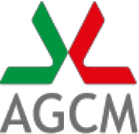PROGRESS WITH THE LIBERALISATION OF THE ELECTRIC POWER AND NATURAL GAS MARKET
PRESS RELEASE
ANTITRUST AUTHORITY
ELECTRICITY AND GAS REGULATORY AUTHORITY
PRESS RELEASE
The joint fact-finding survey undertaken by the Competition Authority and the Electricity and Gas Regulatory Authority into the liberalisation of the gas industry has been concluded
At their respective meetings on 17 June, the Competition Authority and the Electricity and Gas Regulatory Authority resolved to close the fact-finding survey they had jointly embarked upon in February 2003, some three years after the entry into force of Legislative Decree 164/2000, to take stock of check progress with the deregulation the gas industry.
Both Authorities have found that the Italian gas market is insufficiently competitive, and charges higher tariffs than the main European markets despite the fact that Italy had some of the most advanced and competition-oriented legislation in Europe, and that the costs of imported gas is in line with the European average.
One of the main reasons for this is that ENI retains its dominant position on the market, directly and through its subsidiaries in the gas supply stage, both over imported gas and Italian-produced gas, even though there are statutory ceilings on the quota of gas that ENI may put on the Italian consumer market until 2010. In 2003 this amount was equivalent to about 68% of total gas consumption. But this figure rises to well over 75% if account is taken of the amounts of gas assigned by ENI to its hand-picked operators (what are called the "innovative sales").
ENI also controls all the international transport infrastructure used to import gas into Italy, most of which is entirely taken up by long-term gas supply contracts (take or pay contracts) which were drawn up or renegotiated by ENI just before the entry into force of directive 98/30/EC which introduced the regulation.
As a consequence of ENI's dominant position on the gas supply market, its control of the international gas transport infrastructure and its ability to decide on how the gas is assigned in order to honour the ceiling set by the Competition Authority (through the innovative sales), it has lower gas supply costs than its competitors.
The investigation showed that, if real competition is to develop, sharing the market between operators bound by take or pay supply contracts must be replaced by the entry of new operators independent of ENI to supply gas on competitive terms and conditions in order to generate excess transport capacity and ensure greater flexibility to meet the demand. This should also, at least partly, be done under short-term supply contracts other than take or pay contracts.
The investigation also shed light on a number of short-term critical factors which might arise with regard to supplies if new infrastructure is not promptly completed, or existing infrastructure is not upgraded, even though there is no risk - as ENI claims - of a gas glut due to oversupply.
In the field of end-user sales there has also been a certain concentration among the operators (whos enumbers have fallen from 700 to 400), which should continue still further around individual operators with autonomous gas supplies. In this regard, ENEL could have a positive effect on the gas market if can bring more competitive pressure to bear on both the electricity and the gas industries.
The following measures to heighten competition on the gas market have been suggested by both Authorities:
2
• by 2008 projects should be completed to create new regassing infrastructure at Brindisi and Rovigo, that seem the most likely of all those scheduled, at the present time;
• ENI should upgrade the international TAG and TTPC gas pipelines, to provide new opportunities to acquire Russian or Algerian gas supplies through new operators willing to conclude ship or pay transport contracts;
• an Independent System Operator - ISO - should be created to hold and manage the transport and storage infrastructure, with the proprietorship wholly separate from ENI;
• a centralised market (a gas exchange) could be developed. In order to be truly liquid and competitive it should also be integrated with other European markets in order to foster a two-way flow of gas between Italy and the rest of Europe, and a Mediterranean gas hub could be created to compete with the Northern European hubs;
• the dominant operator, ENI, could assign adequate supplies of gas for near supply cost price, without controlling the buyers (gas release scheme);
• volumes of stored gas in excess of the security levels should be released for sale;
• existing long-term supply contracts should be transferred, even though this will require legislation, which could be enacted when the new European directive 2003/55/EC is transposed into Italian law;
• adequate measures could be provided for gas prospecting and production on Italian territory.
Rome, 19 June 2004

